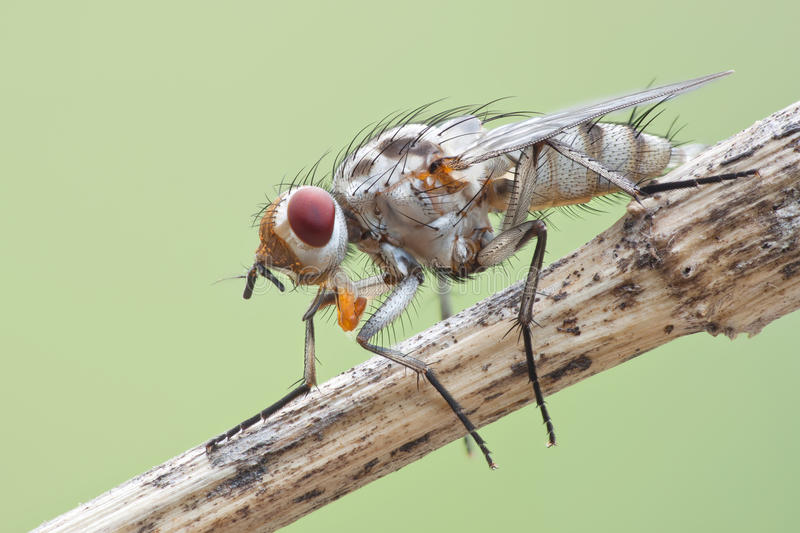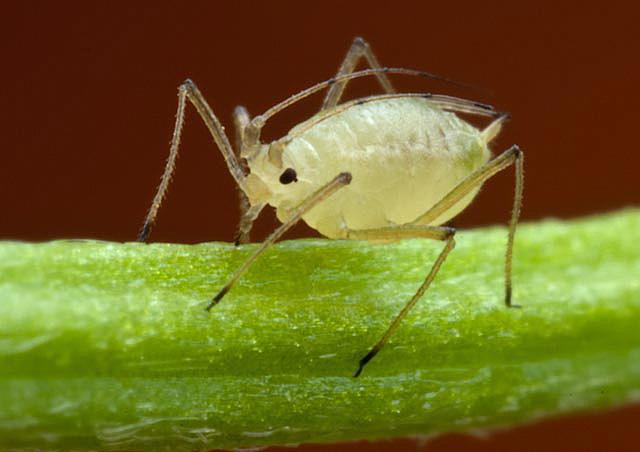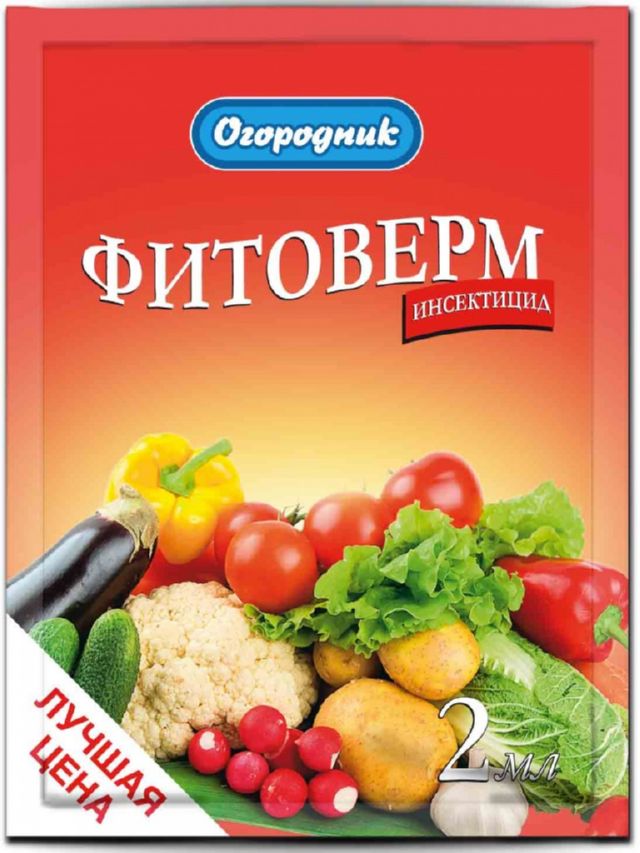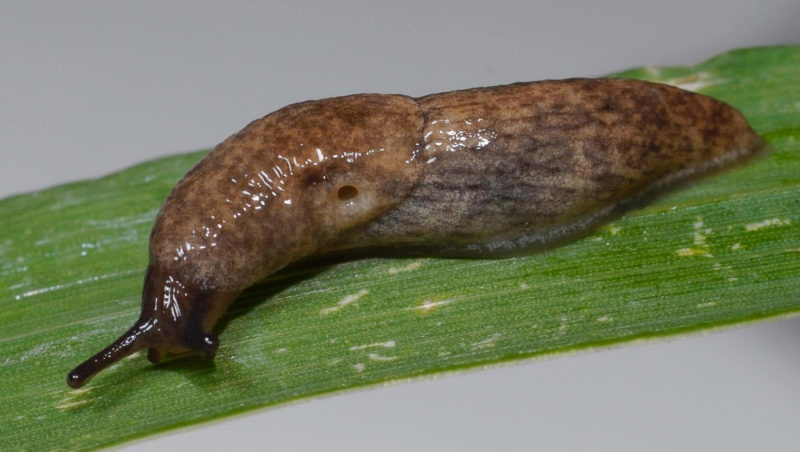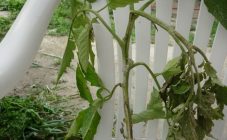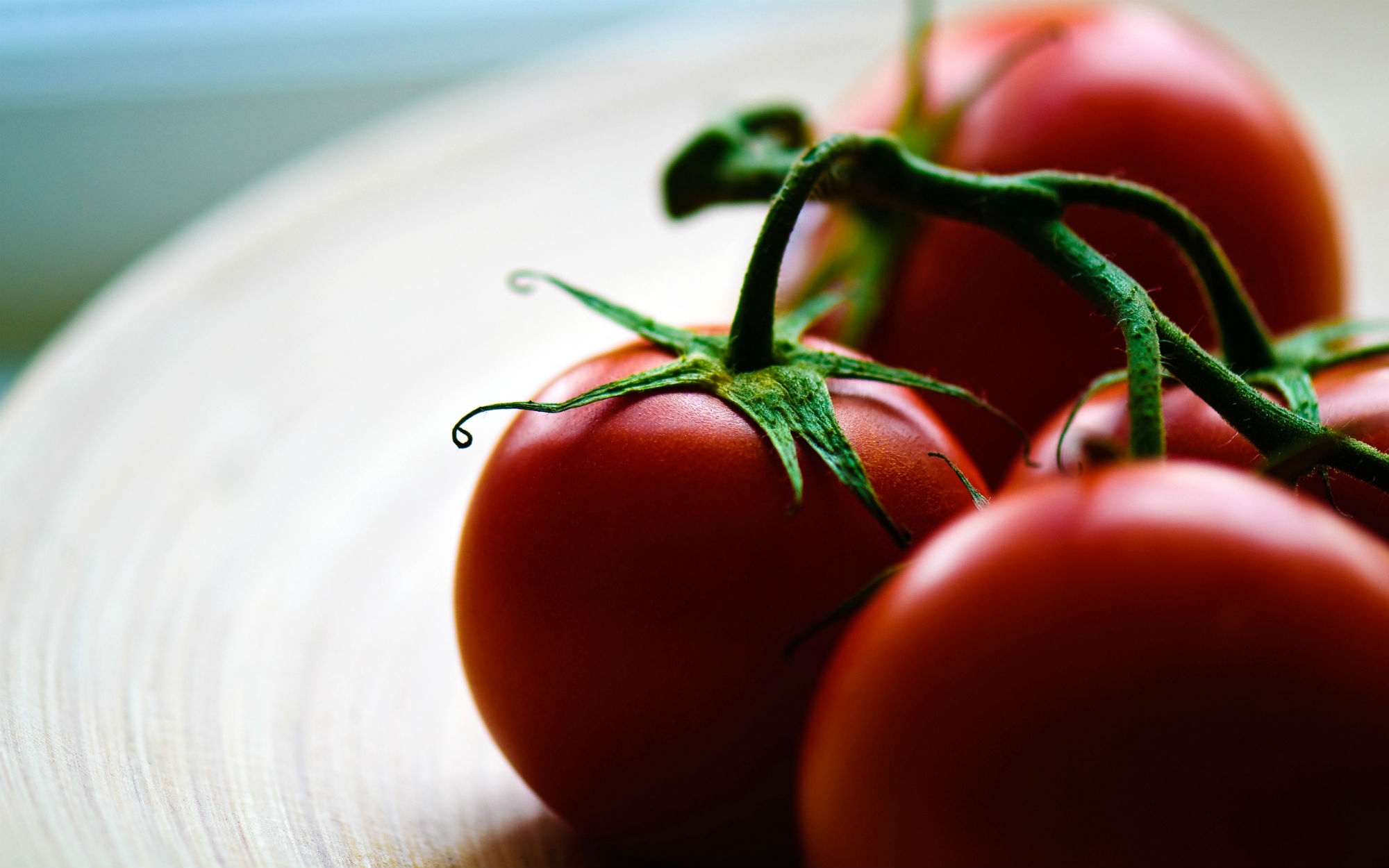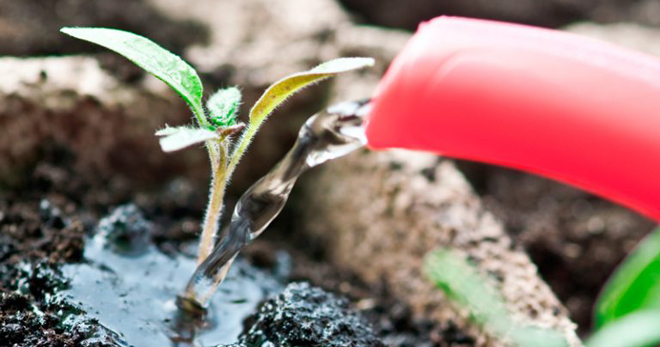Content:
Seedlings of tomatoes, like many other seedlings in the open field, are susceptible to attack by various types of pests, for which gardeners use old and new methods. Only timely detection and emergency measures will help save the seedling and the future harvest.
Pest characteristics and treatment methods
Among the pests of tomato seedlings, the following are worth noting.
Colorado
The beetle has a red-yellow color with black stripes. Being the enemy of not only potatoes, but also tomatoes, it lays its larvae on the inside of the leaf. The main food for the larvae of the pest is young leaves, and for adults - fruits.
Treatment:
- Collect beetles by hand, scanning each bush for the presence of the parasite.
- Spraying with Mospilan, Aktara preparations.
- Spraying each plant with an infusion of ash and placing the potato peel under the bush.
White fly
The white fly, or whitefly, is a flying insect with white wings, similar to a large bloodworm. The parasite leaves the larvae on the surface of the leaves, which, in turn, suck the juices from the plant. It is one of the most dangerous enemies of the nightshade. Transfers fungus that destroys the plant.
Treatment:
- Processing by means of Confidor.
- Sprinkle with garlic or cinnamon pomace.
Brown bear beetle
Among the pests that eat the stems of tomato seedlings, the bear beetle, or bear beetle, which has a length of up to 10 cm and belongs to the locust family, deserves special attention. The adult insect and its larvae eat the roots of the seedlings and their stems.
Treatment:
- Bury the Grizzly, Medvetoks in the soil.
- Pour a mixture of 0.5 liters of vinegar and 10 liters of water into the holes made by insects.
- Bury onion husks, missing meat, garlic in the soil, since the pest does not tolerate strong odors.
Spider mite
The tick passes to the plant from diseased soil or from other plants. The insect feeds on the juice of the leaves, piercing them and forming yellow dots at the edges. In addition to yellow traces, a cobweb forms on the leaf surface, which, in the absence of processing and timely control of the spider, can entangle the entire plant.
Treatment:
- Irrigation with Karbofos.
- Spraying seedlings with alcohol, infusion of garlic or onions.
Aphid
The pest feeds on leaves and stems, sucking juice from a tomato bush and infecting it with diseases. The parasite is especially active in the first month of summer.
Aphids are caused by ants, they use substances that aphids release in food.
Treatment:
- Spraying with Proteus.
- Treatment of bushes with infusion of herbs, tobacco products, ash and iodine.
- Removal of anthills located in the place where the bushes grow.
Night scoop
Representative of nocturnal insects. The parasite's favorite delicacy is young bushes; on the leaves it lays about 1000 eggs, of which larvae appear after 24 hours.
Treatment: irrigation with chemical solutions like Fitoverm, Dendrobacillin.
Prevention: removing weeds at the seedling planting site.
Black butterfly
Thrips, or black butterfly, is another insect that causes irreparable harm to tomato seedlings.Adults and their children feed on vegetable juice of tomatoes, extracting it from the inflorescence, bringing death not only to the ovary, but also to the resulting fruits.
Treatment: spraying with Fitoverm.
Prevention:
- Cleaning the soil from weeds and dirt.
- Removal of the topsoil in order to disinfect the landing site.
- Disinfection of containers in which a young seedling will emerge.
- Irrigation of the bushes with infusion of garlic: a teaspoon of garlic in 200 ml of water or a mixture of 80 g of tobacco and a liter of water.
Slug
The pest belongs to the shellfish family. A favorite delicacy is the leaves, stalks and fruits of tomatoes. The crop after the attack of slugs becomes covered with holes and a bloom of mucus, which leads to its rapid decay and death.
Treatment - spraying with the following solutions:
- from red hot pepper - 0.5 pepper and 10 liters of water are used. During the preparation process, the mixture is infused for 48 hours, then boiled and again kept in a container for two days until fully cooked. It must be used before flowering, after adding a solution of 50 ml of liquid soap.
- from garlic - finely chopped three heads of garlic, mix with 10 liters of water and strain. Insist for 24 hours before use.
- from dry mustard powder - dilute 30 g of mustard in 100 ml of water. Insist for an hour in a warm place and dilute with 6 liters of water. It is desirable to spray not only the plants, but also the soil around them.
Prevention:
- Constant weeding and loosening of the earth.
- Elimination of items that can retain soil moisture.
- Before freezing, dig up the ground to a depth of 15 cm to reduce the risk of the parasite.
- Dig up garden soil before planting in order to destroy egg-laying.
- Create traps using cut bottles and beer baits to collect slugs.
- Place damp stones along the beds as bait.
Wireworm
The worm is the larva of the click beetle and has a poisonous yellow color. The stems and roots of tomato bushes are eaten.
Treatment: when planting seedlings in the holes, you need to put a mixture of onion husks, straw and mustard powder - this will slow down the development of the parasite.
Prevention:
- Plant near nightshade peas or beans.
- Reduce soil acidity.
- Reduce watering of plants.
Useful Tips
- It is not recommended to plant tomatoes next to potatoes and in their place, as well as in the place of peppers and melons. In the event of a disease of the previous plant, something can be planted in its place only after a few years.
- It is advisable to plant nightshade bushes at a distance of 50 cm from each other, and rows at a distance of a meter.
- Frequently disinfect instruments and hands after planting each plant to avoid the transfer of possible pathogenic bacteria.
- Provide good air circulation by keeping greenhouse windows open.
- Prune tall stems to ensure that all nutrients go to the fruit.
- Disinfect the ground in order to eliminate pathogenic bacteria.
- Remove contaminated soil from the planting site.
- Periodically loosen the soil, remove larvae and egg clutches of harmful insects.
- Treat the land before planting with potassium permanganate solutions and ash.
- To lure a bear, you need to make a trap of beer or dung.
- Spray the bushes with a mixture of milk and iodine to reduce the risk of fungal infections and pest attacks - insects are lactose intolerant.
These are the main pests of tomato seedlings and the control methods that gardeners use to preserve the harvest. Knowing how to detect them and how to treat tomato seedlings from pests, you can take action in time. To prevent infestation, it is recommended to carefully prepare the soil for planting and create a comfortable environment for young plants.
